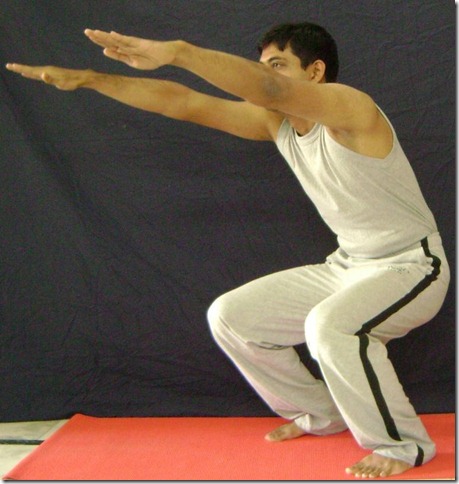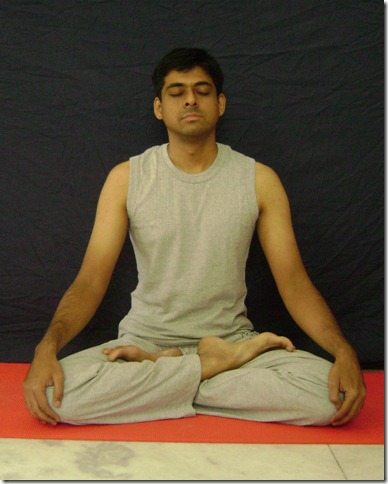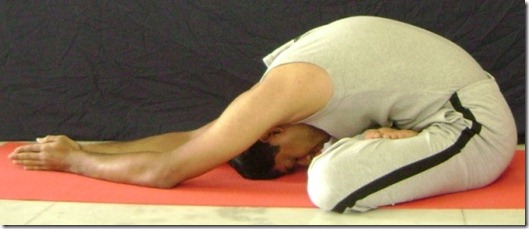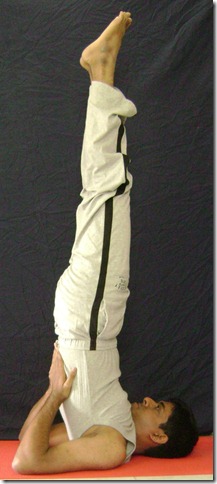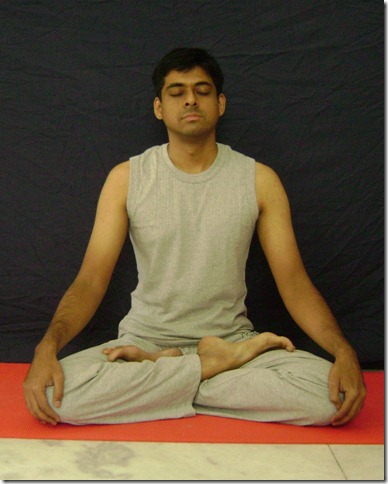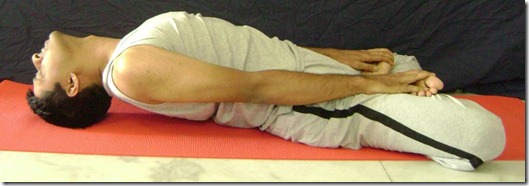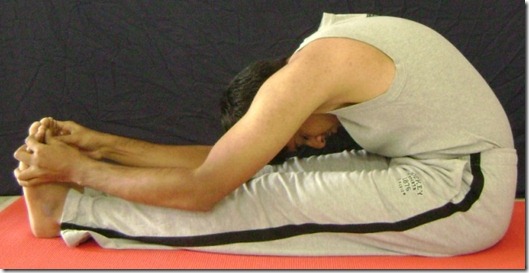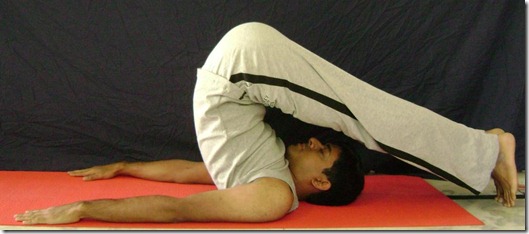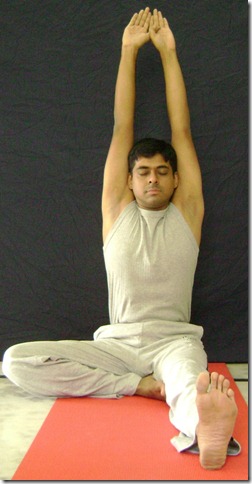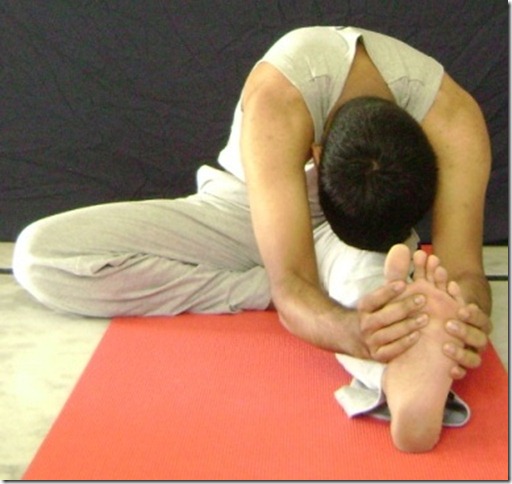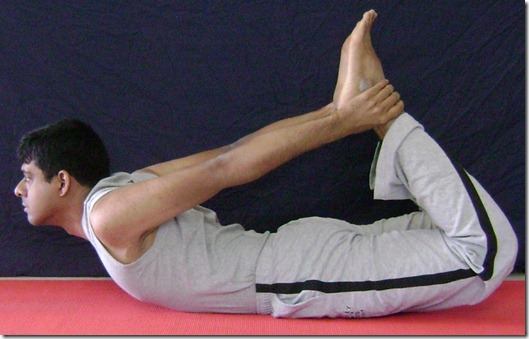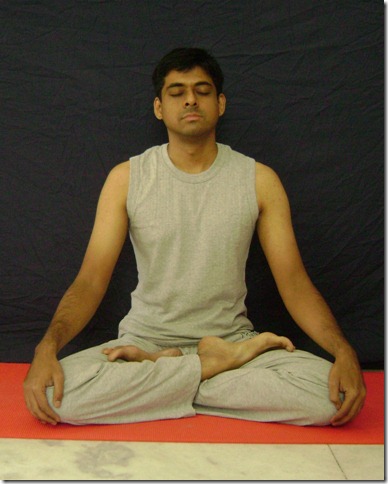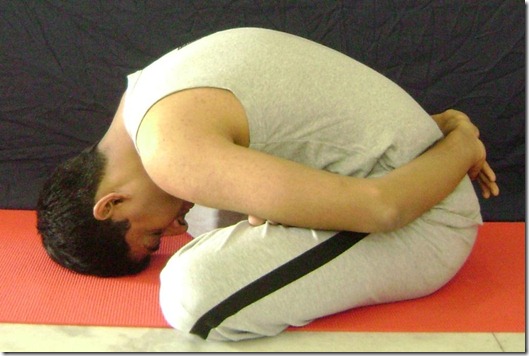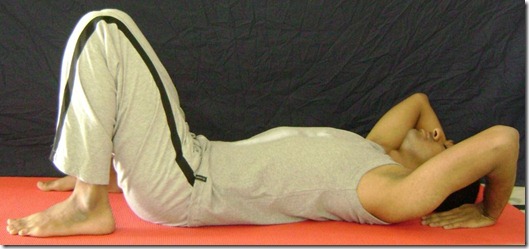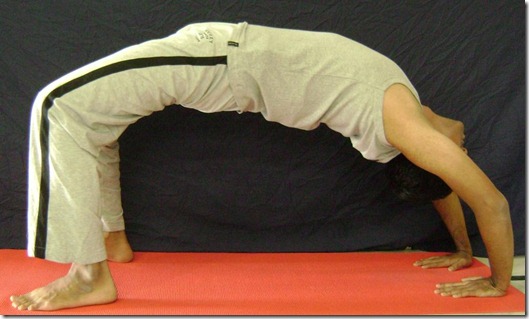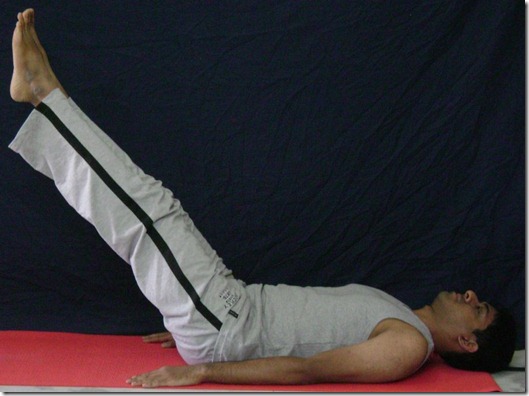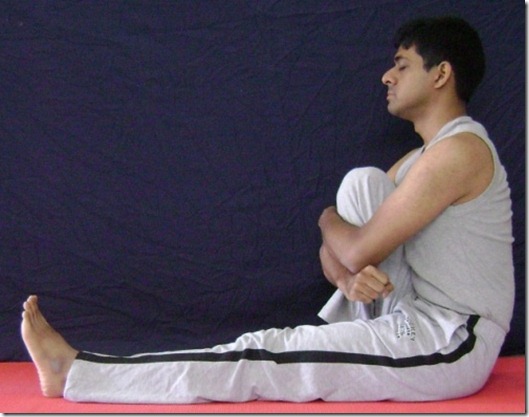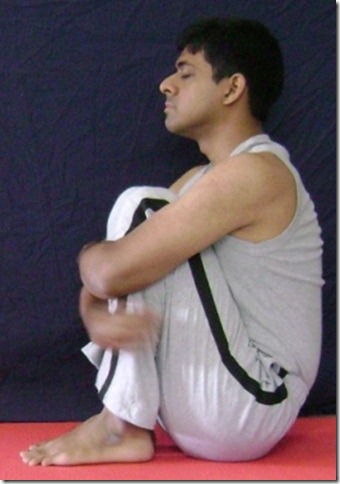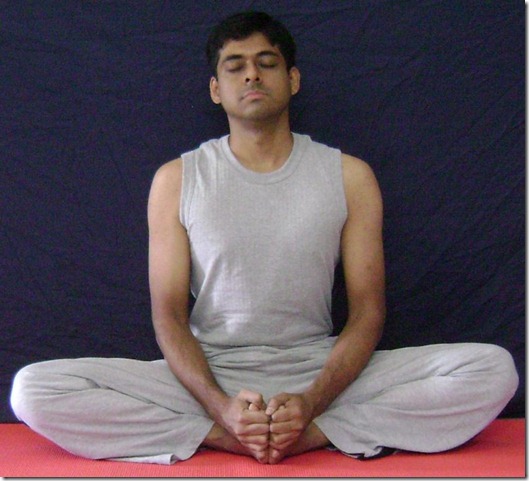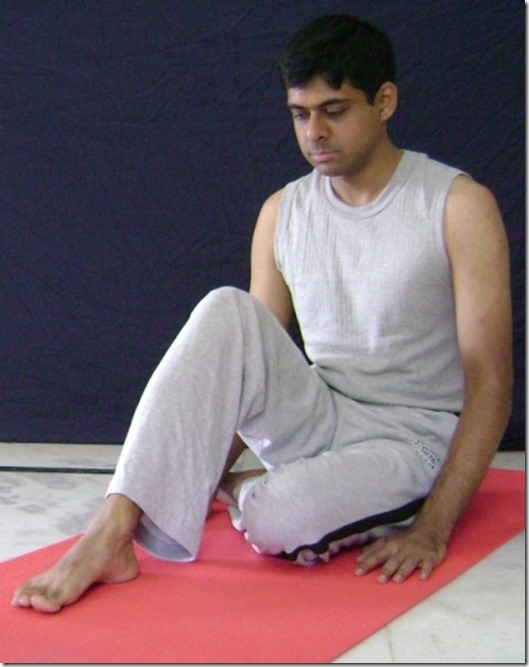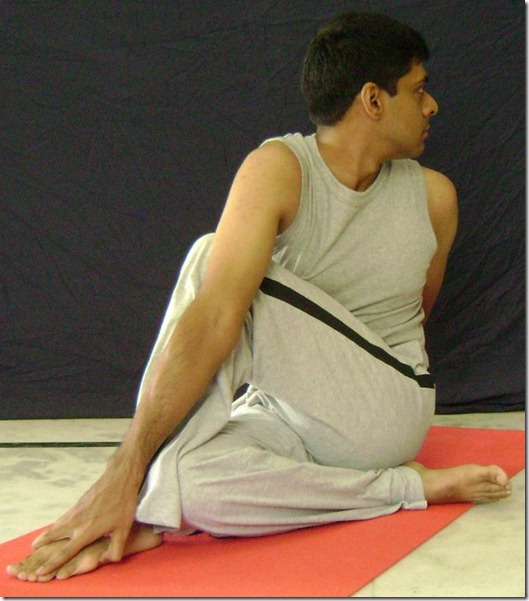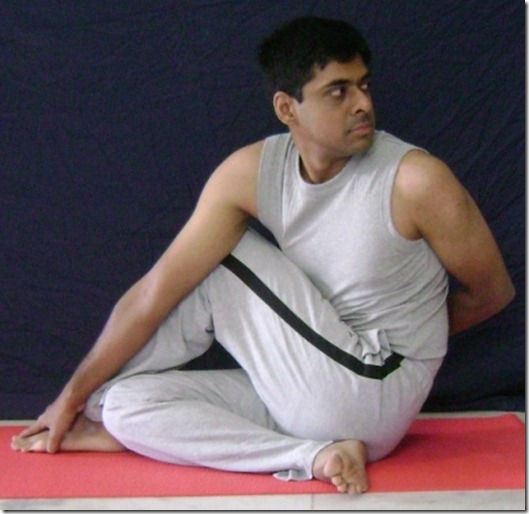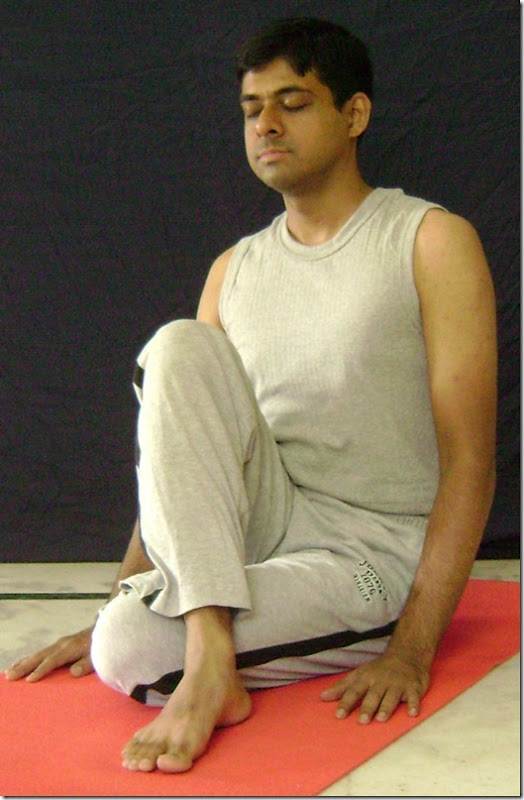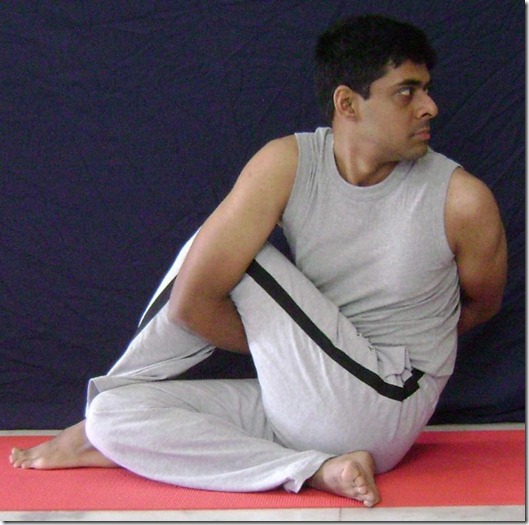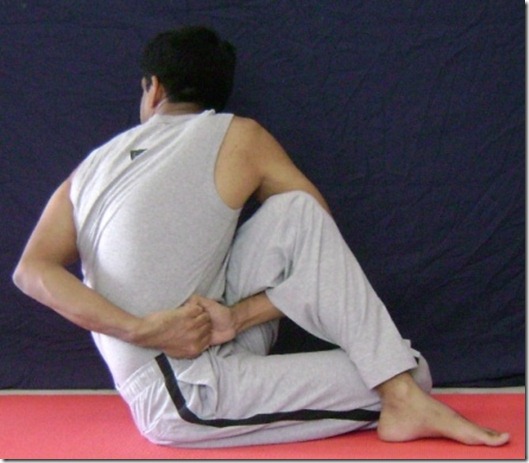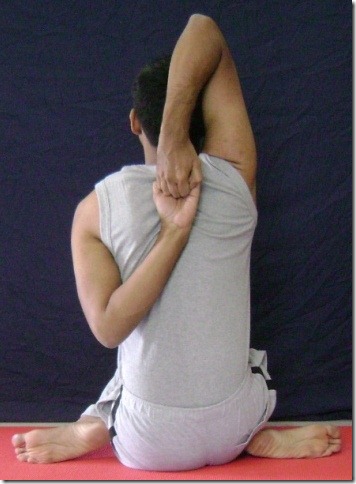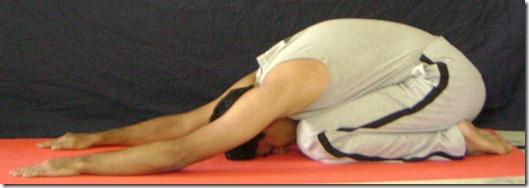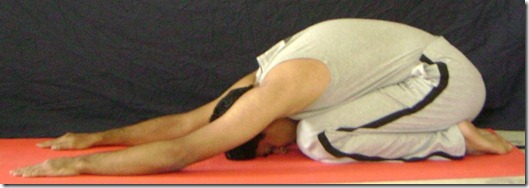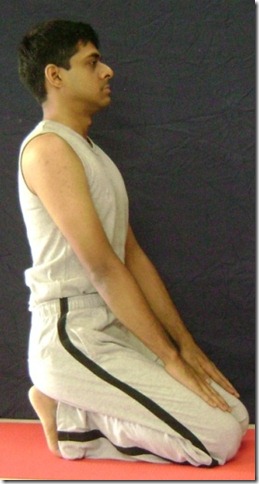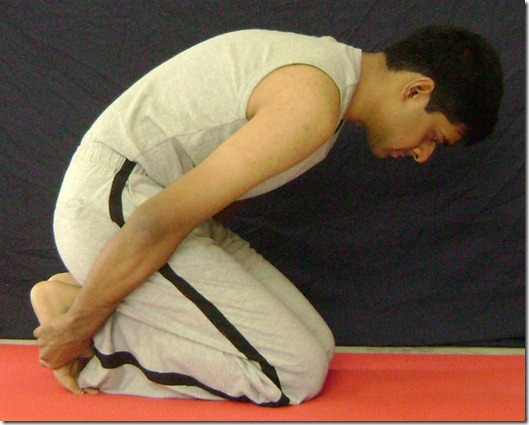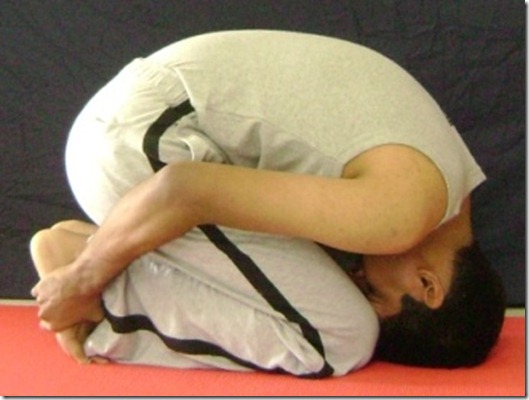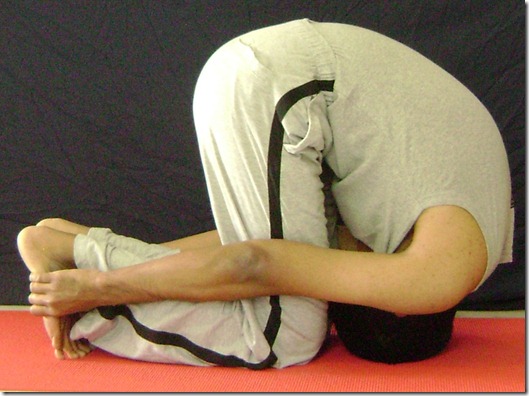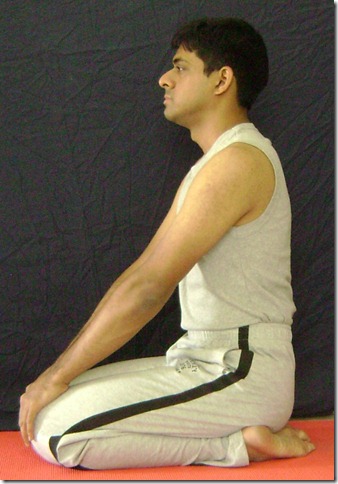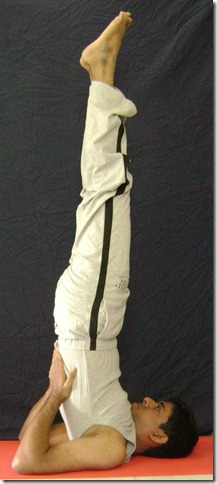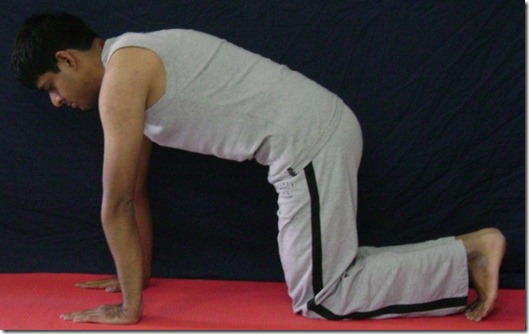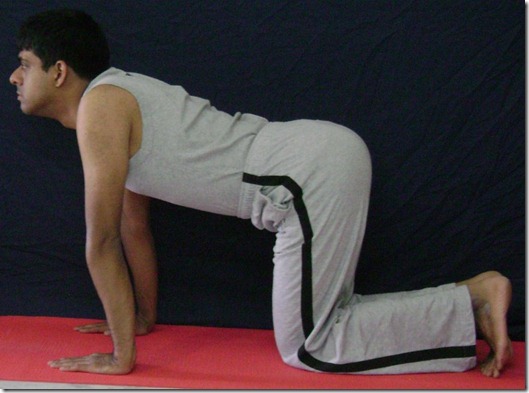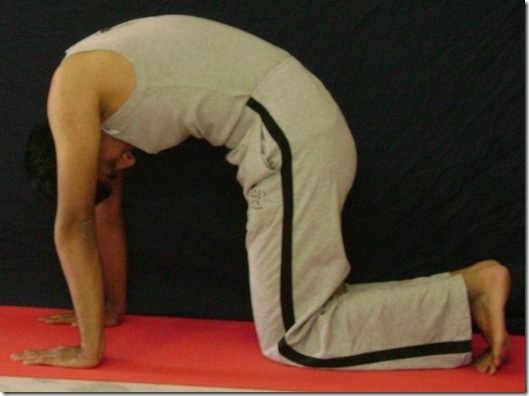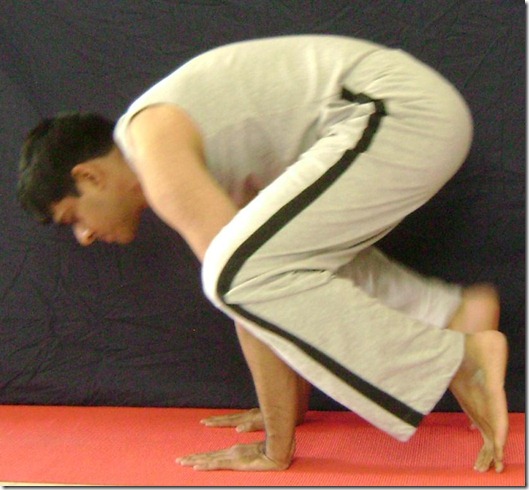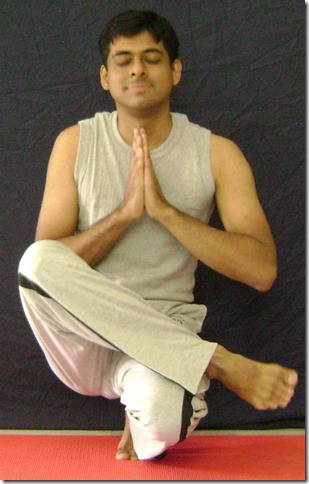I’ll keep this simple. Asanas are not a cardio exercise. They are a very mild form of exercise. They address a different need; that of toning the body, the glands, the organs and all associated metabolic functions. Asanas focus on the effective circulation of blood all over the body. Asanas strengthen the immune system. Even more importantly, they regulate and maintain the extremely fragile balance between all the hormones in the body. Hormones are secreted in miniscule quantities but the potency is so strong that they define the way we behave or act. Asanas help maintain this balance and prepare the body for exercise and the day ahead.
Asanas play a corrective role. They also prevent accelerate the cure of many diseases. They can be practiced in conjunction with one’s daily regular exercise regimen to give wholesome health.
The below asanas have been picked as they are relatively easy to practice and address the ill effects of a sedentary lifestyle. Most service oriented employees today suffer from back pain, lower back pain, shoulder pain, carpal tunnel syndrome and spondulitis. These asanas help address most of the conditions. Just 20-30 seconds for the easy asanas will go a long way in staying healthy.
Precautions:
Do not start doing the asanas if you have been totally out of practice with any form of activity. It would be advisable to have yourself checked or assessed physically once before beginning.
Avoid the asanas immediately after or less than half an hour before a meal. Do not bathe immediately after a meal. Wait for about 20 minutes. If you intend to exercise after asanas, wait about 20-30 minutes for the body to settle down. Also, do not exercise if your pulse rate is high after doing the asanas.
For most of the asanas, only the final positions have been shown. Initial poses have been shown where necessary. Try to come to the final pose in each asana and remain relaxed.
NEVER APPLY FORCE TO YOUR BODY. This is very important as excessive force to get into a position could cause short or long term damage.
Try to do the asanas as accurately as possible, even if you can maintain the pose for only a few seconds. Start with the timings with which you feel comfortable, then slowly increase the time to reach the maximum given in the text.
Always concentrate fully on the area where you feel the maximum resistance in each asana.
Don’t hold your breath. Always breathe normally.
Relax in the Shavasana position for about 15 seconds between 2 asanas.
A very crisp and quick routine would be the following asanas, each for about 20 seconds. It will be sufficient to keep your body in tune.
1. Sarvangasana
2. Matsyasana
3. Pashchimottanasana
4. Nauasana
5. Halasana
6. Salabhasana
7. Pavanamuktasana
8. Ardhamatsyendrasana
9. Shashakasana
10. Shavasana
Vrikshasana
Stand erect, feet together. Raise arms sideways to overhead, rise on toes, stretch fully, knees straight, abdomen pulled in.
Benefits. Stretches the muscles and joints, and prepares the body for the various asanas. Also improves the general balance of the body.
Utkatasana
Stand erect, feet slightly apart, toes slightly turned out. Bend from the knees (as in sitting on a chair), knees slightly out and vertically over toes, back straight, arms stretched forward (horizontal and parallel), palms down, head up.
Benefits. Strengthens the leg muscles, lightens the body and brings it under control. A special feature - its practice both strengthens the knee joints and ensures a secretion there from which the cartilages receive nutrition to keep them mobile.
Sharanagata Mudra
Sit in the Padmasana Position. Exhale, and inhaling raise the hands upward from the sides and join the palms. Exhaling, bend in the waist and touch the forehead on the floor keeping the hands straight. After taking the final position, continue smooth breathing.
Benefits: Reduces mental tension
Sarvangasana
Lie on your back, arms alongside. Raise both legs together - taking support of hands on the hips and elbows on the ground. Straighten the body - feet, knees, hips and back to form one vertical column from the base of the neck to the tip of the toes, feet stretched, toes pointed, chin pressed against the chest. Normal breathing.
Benefits. Promotes healthy secretion of the thyroid leading to healthy functioning of the circulatory, respiratory, alimentary and genito-urinary systems. Keeps the spine flexible preventing the bones from early ossification. Supplies large quantities of blood to the spinal roots of the nerves, giving them sufficient nourishment.
Matsyasana
Sit with legs as in Padmasana - knees bent, feet on opposite thighs, heels towards the abdomen. Lie on your back. Placing hands near the head for support lift your back above the ground, keep the top of your head on the ground over a padded surface. Keep your hand on your feet and breathe normally.
Benefits: Makes the neck flexible and strong, increases the size of the rib cage, widens the windpipe and helps deep breathing. Relieves the neck after Sarvangasana. Also reduces a double-chin.
Pashchimottanasana
Lie on your back, legs straight, arms overhead, hands together, palms facing up. Sit up, take hands overhead, back straight, then bend forward to hold the big toes, head between arms and touching the knees.
Benefits. Reduces abdominal fat. Removes wind from the intestines and increases appetite.
Nauasana
Lie on your stomach, legs straight, toes pointed, arms stretched overhead, hands together, palms on the ground. Raise legs (knees straight), arms (hands together), chest and head to form a boatlike arch. Breathe normally.
Benefits. Improves appetite. Tones up the chest muscles and reduces abdominal fat.
Halasana
Lie on your back, arms alongside. Raise legs as in Sarvangasana, then lower them overhead, knees straight, ankles stretched, toes pointed and touching the ground. Arms stay on ground as in beginning, palms on the ground. The posture resembles the shape of a plough.
Benefits: Makes the spine flexible, and increases the supply of blood to the muscles of the back. Aids in the stimulation of the thyroid and thymus glands helping one to look younger.
Salabhasana
Lie on your stomach, hands under thighs, palms up, forehead on the wound, feet together, toes pointed. Raise legs as high as you can, knees straight. Do not take support of your hands.
Benefits: Helps remove muscular pains in the lower region of the back. Makes the lumbar vertebrae flexible.
Janushirasana
Sit with legs stretched out in front, back straight. Place right foot against left thigh, heel as close to groin as possible. Raise arms overhead, hands together, thumbs locked. Bend down to hold left foot or toes from both sides, head as close to left knee as possible. Left knee should be straight, right knee on the ground.
Repeat asana with opposite leg positions.
Benefits: Increases digestive power and helps cure urinary problems.
Dhanurasana
Lie on your stomach. Bend knees, hold the ankles. Pull with your hands and push with your legs, knees together, till the trunk forms an arch with as far as possible only the stomach on the ground. After releasing the posture lie for a while in Shavasana.
Benefits: First reduces abdominal fat. The compression of the spinal column, pressing the nerves with the scapulae (the winged bones at the back attached to the arms) minimises
blood circulation while in the asana. But when the pose is released a greater supply of blood is circulated to those very regions increasing spinal flexibility
Yogamudra
Sit with legs as in Padmasana knees bent, feet on opposite thighs, heels towards the abdomen, back straight. Hold your hands behind the back and on the ground, shoulders squared, head up. Slowly bend forward to touch the ground with the forehead in front of the shins. Don't raise hips.
Benefits: The purification of the blood is greatly enhanced by this asana.
Chakrasana
Lie on your back. Bend knees, place feet apart to just outside the hips and close to hips, place hands over and beside the head, palms beside ears and shoulders. Without moving the hands and feet, push and raise trunk as high as possible to curve the back into an arch, look on the ground between the hands.
Benefits: Builds up a flexible back and stimulates the spinal nerves. This is one of the more powerful back-bending postures.
Utthitapadasana
Lie on your back, arms alongside. Raise legs to 45 degrees, knees together, toes pointed. Keep lower back pressed to the ground. Breathe normally.
Benefits. Strengthens the abdominal muscles and the legs. Helps cure indigestion
Pavanamuktasana
Lie on your back. Bend one knee, hold it close to the chest, other leg straight, head on the ground. Repeat with the other knee. Repeat with both knees.
Sit with legs stretched in front. Bring one foot close to hips, hug the knee to chest, other leg stretched on the ground, back straight, head normal. Repeat with the other knee. Repeat with both knees.
Benefits: Removes gas from the abdomen and reduces abdominal fat. Increases the flexibility of the knees and hips.
Bhadrasana
Sit holding feet together, heels as close to groin as possible, knees should be as close to ground as possible. Keep the back erect possible, head up, chin down. Breathe normally.
Benefits: Specially recommended for those suffering from urinary disorders. The pelvis, the abdomen and the back get stimulated through a plentiful supply of blood. Keeps the kidneys, the prostate and the bladder healthy.
Ardhamatsyendrasana
Variation A:- Stretched legs out in front. Bend right knee, place right foot on left
side of left knee, left leg straight. Hold left leg with left hand – keep right knee on the left of left arm. Turn trunk to right, look back over the right shoulder, right hand on ground for support or behind the back as close to left thigh as possible. Repeat with left knee bent and trunk turning to left.
Variation B:- Bend left knee, place left foot under right hip. Bend right knee, place right foot on left side of left knee. Hold left knee or right foot with the left hand - keep right knee on the left of left arm. Turn trunk to right, look back over right shoulder, right hand on ground or on waist as close to left thigh as possible. Repeat with left knee bent and trunk turning to left.
Another variation is that you may also hold hands through the gap below the raised knee.
Variation B
Benefits. Increases the elasticity of the spine, and massages the abdomen and internal organs.
Gomukhasana
Sit with right knee on left, back and head erect, feet on either side of the hips. Hold hands behind the back, right elbow pointing upward and left elbow pointing downward. Repeat with left knee on right, left elbow pointing upward. Remember that whichever knee is above, the same elbow points upwards
Benefits: Helps proper functioning of the gonad glands. Sitting in this asana for about 5-10 minutes helps handle insomnia
Ushtrasana / Ardhakurmasana combination
Kneel. Hold your ankles, push with your hands, arms straight, to raise your chest and form an arch, look up, head relaxed behind. Note: Start Ardhakurmasana IMMEDIATELY after this asana.
Benefits. Makes the spine supple. Increases blood flow to the brain. Good for back problems.
From Japanese sit (hips on or between the heels, knees together) bend down, arms stretched forward, forehead and palms on ground. Body completely relaxed. Normal breathing.
Benefits: Removes fat in the abdomen and buttocks. Helps to improve digestion.
Shashakasana
Sit in Japanese style. Place top of the head on the ground as close to knees as possible, hold your heels and raise the hips until the arms are straight. Normal breathing.
Benefits: Increases digestive power. Helps the functioning of the liver and spleen. Makes the spine flexible.
Veerasana
Japanese sit. Hands on knees, abdomen drawn in, chest up, back straight, shoulders squared, head erect. Normal breathing.
Benefits: Aids digestion and helps cure sciatica (back pain)
Ashwini Mudra
Lie on your back, arms by the side. Raise both legs together with the support of the hands on the hips and elbows on the ground. Straighten the body - feet, knees, hips and back to form one vertical straight line from the base of the neck to the tip of the toes, feet stretched, toes pointed, chin pressed against the chest. Breath normally.
Benefits. Promotes a healthy thyroid leading to healthy functioning of the circulatory, respiratory, alimentary and genito-urinary systems. Also keeps the spine flexible preventing the bones from early ossification. Supplies large quantities of blood to the spinal roots of the nerves, giving them sufficient nourishment.
Bidalasana
Sit down on your hands and knees. Keep arms and legs perpendicular to the floor. Knees should be as wide apart as the hip and the hands should be shoulder width apart. Inhale and curve the lower back down towards the floor, open the chest and shoulders and look ahead.
Exhale and curve the back up towards the ceiling, starting from the lower back followed by the upper back. Bring the crown of the head towards the floor and relax the neck down. Try to touch the chin to the chest
This asana helps release lower back pain and massage the back. Also very helpful during early pregnancy
Merudandasana
In this asana, the upper body is balanced on the arms, by pressing the legs against the arms, and the feet lifted off the floor. From a sitting position, bring the feet in, close to the body, and come onto the toes with the support of the hands. Place the hands about 1 to 1.5 ft apart on the ground in front of the knees, with the fingers spread out. Bend the arms slightly and touch the inner side of the knees to the outer sides of the respective upper arms. The shins should also be touching the back of the respective upper arms.
Squeezing the knees against the arms and the arms pushing out against the knees, slowly lean the body forward, lifting the buttocks in the air, gradually transferring the body weight onto the hands. Then lift the feet off the floor, balancing the body on only the arms. The gaze should be on the ground about 3 ft forward.
Benefits: Balances the nervous system. Strengthens the arms and wrists. Develops physical balance.
Padangusthasana
From a sitting position, bring feet in, close to the body, and come onto the toes. Lift the left foot up and place it on the right thigh. Make sure that the right thigh is parallel to the ground. Adjust the right heel so that it presses against the perineum. The entire body weight is now borne by the toes and ball of the right foot.
Once balance is achieved, bring the hands to the front of the chest in namaskar.
Benefits: Strengthens the legs, especially the ankles and toes. Regulates the reproductive system. Prevents spermatorrhea. Stimulates the nervous system.
The next post will be on the Suryanamaskar program, a complete workout early in the morning.

